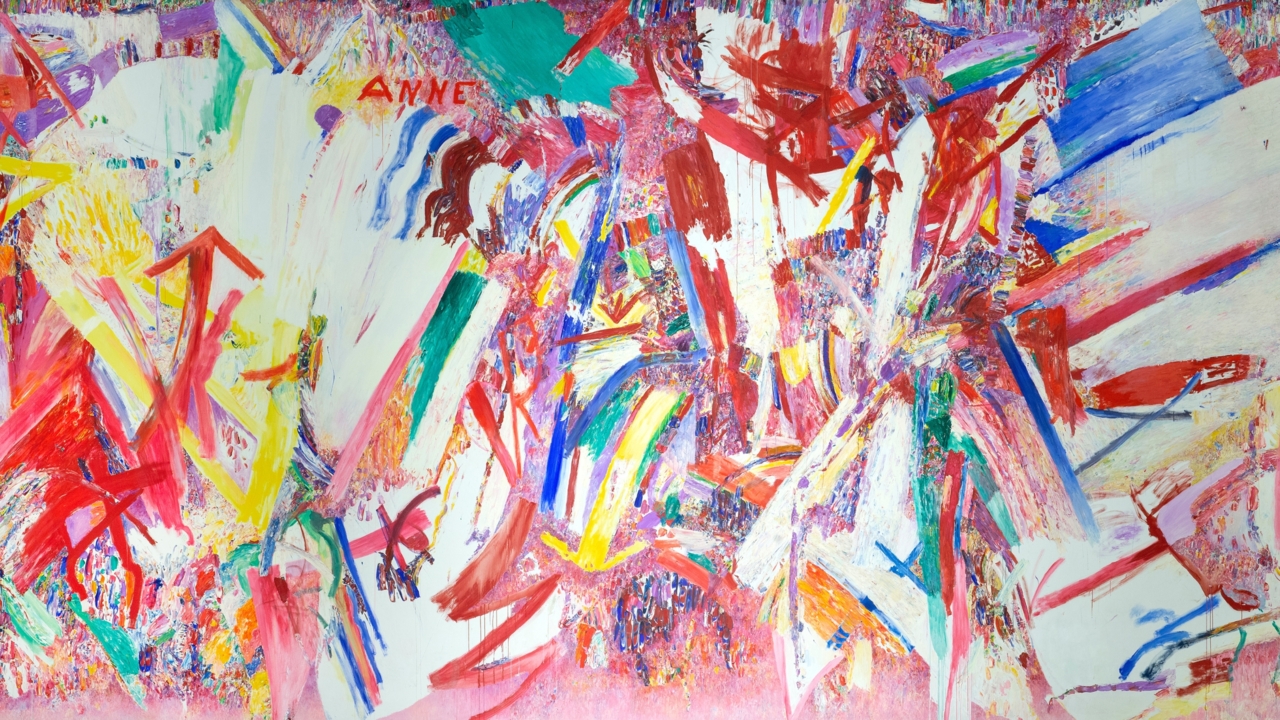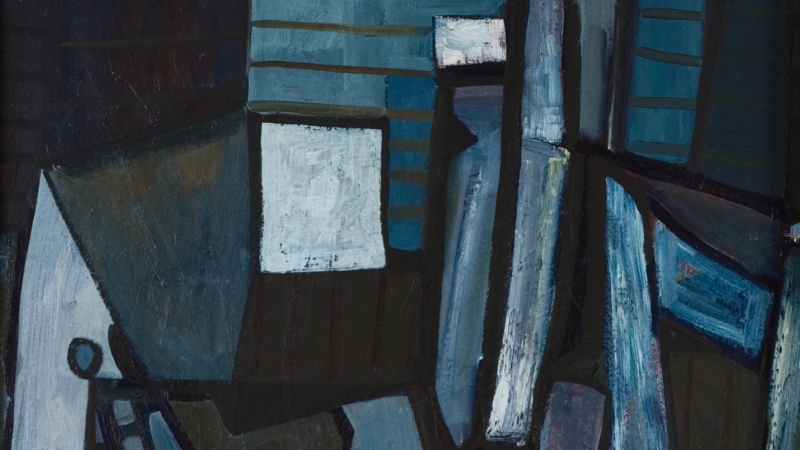
The Weidemann painting Mai
Jakob Weidemann's painting Mai measures 16 x 6 meters and is by far the largest painting the artist ever painted.
The artwork was commissioned by the Friends of the Sandvig Collectors for the main wall in the old Maihaugsalen in 1967, and is usually only seen as a background on the stage in Maihaugsalen at certain events.
In connection with the exhibition Kinds of Blue - Jakob Weidemann 1942-1957, which is being shown at Lillehammer Art Museum on the occasion of the artist's 100th anniversary, the painting was available for the public from June 17 to August 15.
About the artwork
Over the course of about four months in 1967, Weidemann mastered the almost 100m2 format in an intensive creative process. Despite the great technical challenges, he managed to maintain the effect of liveliness and spontaneity.
The viewer's gaze is drawn from the center with countless small shapes via expansive gestures and divergent color surfaces to the sides of the canvas and from there back to the center, thus we remain in constant dynamic movement.
Mai is a typical example of Weidemann's abstract-expressive phase after 1963, where his paintings are dominated by marked gestures and open surfaces. Color choice is typical for this phase in his artistry. This is also the time for his greatest successes, not only in Norway, but also internationally.
Weidemann and Lillehammer
In 1954, Jakob Weidemann married the journalist Anne Marie Frøisland (1921–2010), who had grown up in Lillehammer. At the very beginning of the work process, Weidemann wrote the name of his wife Anne in large letters on the canvas at the top left of the center. This mental reference point remained visible until the end of the work.
Today, the picture is inextricably linked to the couple's move from Oslo to Lillehammer. While Jakob was working on the picture, Anne discovered the small farm Ringsveen which served as a happy home for the married couple from 1968 for more than three decades, until the end of their lives.
